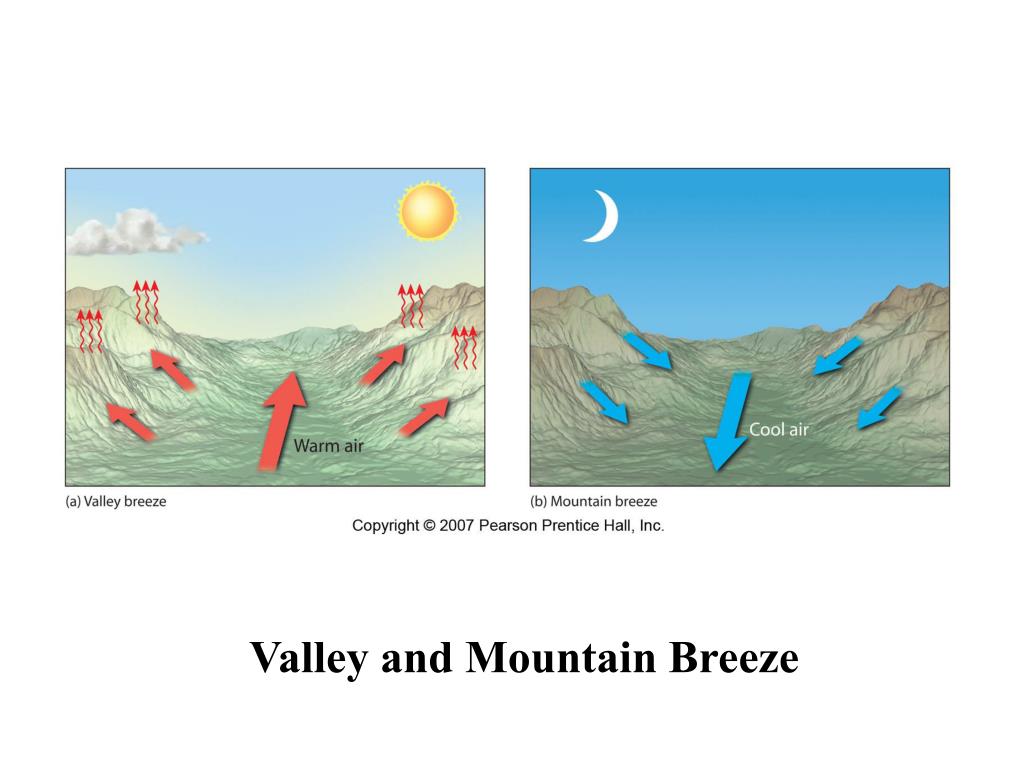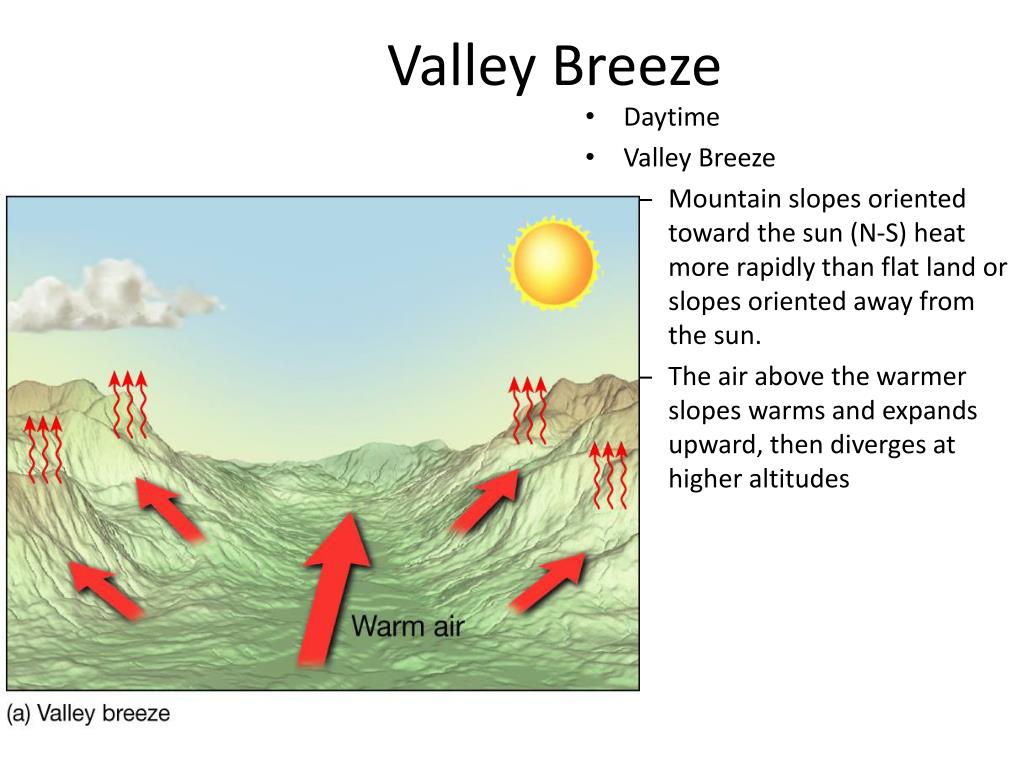
So the next time you’re on Scenic Drive at noon or even sunset, try to notice the shift in winds that come from a valley or mountain breeze. As the sun rises, the valley air warms rapidly and rises along the mountain slope to form the valley breeze.At night, the surface air quickly cools and slides down the mountain slope, forming the mountain breeze. This causes an air drainage affect, resulting in a Mountain Breeze. A similar pattern occurs along mountain slopes. With the sun gone, air throughout the slopes of the mountain begin to cool quickly. In the night the Valley Breeze is reversed. This causes the warmer air to move up the mountain and generate a Valley Breeze.Īfter sunset, is when we begin to see the effects of a Mountain Breeze. Mountain and Valley Breezes are very similar to sea breezes however they occur in the mountainous regions.ĭuring the day, air that sits along our beautiful Franklin and Organ mountain slopes are heated far more intensely than the air at the same elevation over the valley floor. Experimental determination of the effect of mountain-valley breeze circulation on air pollution in the vicinity of Freiburg. These winds are mainly observed in the warm season.īy the way, on mountainous coasts, the mountain-valley circulation merges with the breeze circulation - in this case they mutually reinforce each other.El Paso, TX (KTSM) - We’ve all heard of a ‘Sea Breeze’ and how it’s one of the things people love to talk about as a perk when living by the ocean but have you ever heard an El Pasoan say they love the ‘Mountain’ or ‘Valley’ Breeze? This is the case on glaciers, where a cold glacier cools the air around the clock, which as a result continually flows down.īoth of these winds, katabatic and anabatic, together make up the mountain-valley circulation. Local Winds III Mountain and Valley Breeze Geography Simplified Mountain and Valley Breezes-Types of Local WindThe Concept of a Mountain Breeze and a V.

Note: Katabatic winds can also exist without anabatic winds. Illustration: Valerya Milovanova / Windy.app The formation of wind in the mountain at night. Such cold winds, directed down the slopes, are called katabatic (from the Greek κατάβασις, katabasis - descent, decline). However, the air that is directly adjacent to the cold mountains cools faster, which means it gets heavier and begins to flow down the cooler slopes, surrounded by warmer air. To continue the analogy with the breeze, the mountains and the air near them play the role of the shore, and the air at some distance from the mountains plays the role of water.Īt night, the slopes (like the shore) cool quickly, and the air cools slowly (it has water in it, which holds heat for a long time). The formation of wind in the mountain during the day. This wind blowing up the slope is called anabatic (from the Greek anabaino - to rise). If the cold air is on only one side, then it displaces warm air, but at the same time - presses it to the mountain. During the day-time we have breeze or winds blowing from valleys to mountain peaks and they are called the Valley breeze. Why does warm air blow upward along the slope and not rise vertically upward? The fact is that the warm air rises vertically when it is SURROUNDED by the cold air (which forces it up). As a result, the warm air begins to blow upward along the slope. It is pushed upward by the cold air and pressed against the mountain by the cold air. During night, air on the mountain surface cools, gains density and. And the air at a distance from the mountain stays cold. Air on heating loses its density and moves up the mountain surface causing valley breeze. Illustration about result, arrow, geography, meteorology, diagram, movement. The slopes give their heat to the air, but only the air immediately adjacent to the mountain heats well.

Illustration: Valerya Milovanova / Windy.app How does wind form in the mountains?ĭuring the day, the sun’s rays strongly heat the mountain slopes. It works like this: in the mountains, the air warms during the day and rises from the valley up the slopes, and at night it cools and descends from high places into the valley.ĭaytime breeze mechanics. While near the sea the breeze mostly blows horizontally, in the mountains a similar wind blows along the slope. So at night the wind blows in the other direction. By evening, the land cools down, while the sea, on the contrary, warms up and retains heat. During the day the shore warms up, the air rises there, and the cool air from the sea takes its place. This wind blows from the sea to the shore during the day and in the opposite direction at night. In this new lesson of the Windy.app Meteorological Textbook (WMT) and newsletter for better weather forecasting you will learn more about what valley wind is and how it works.

They are called mountain and valley winds.


 0 kommentar(er)
0 kommentar(er)
